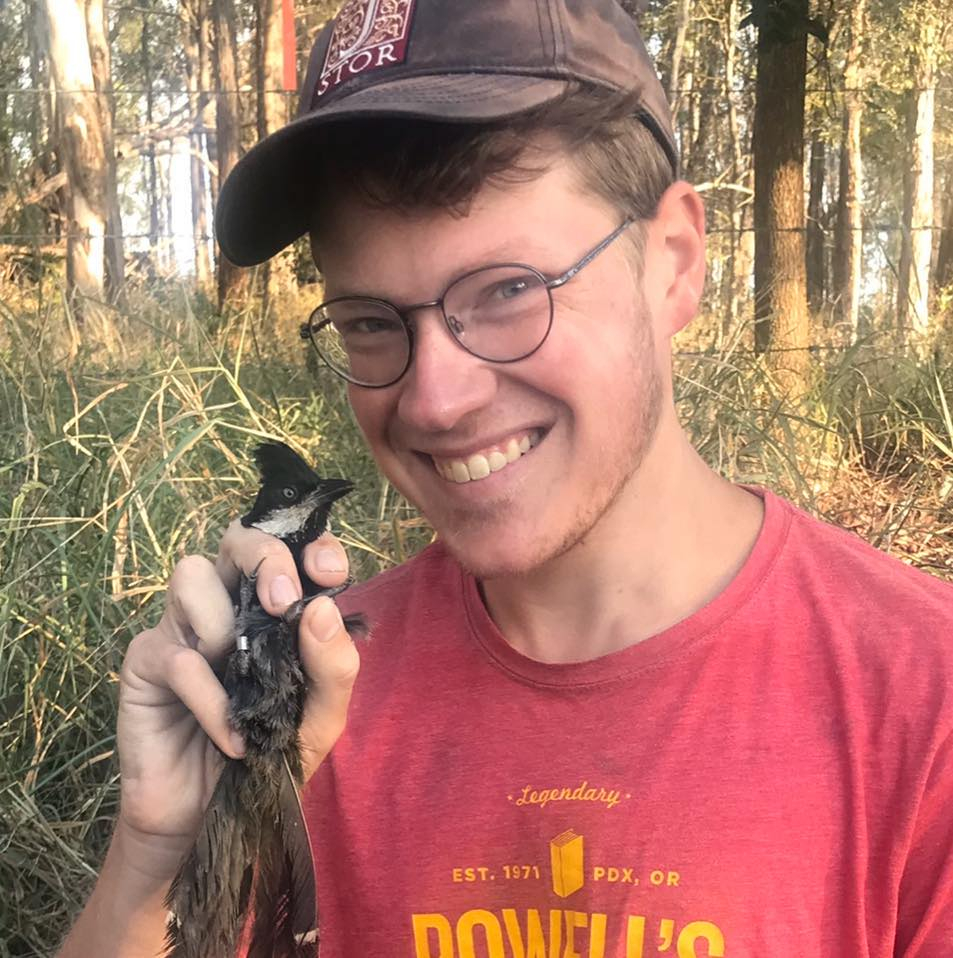Graduate students within the lab explore a variety of topics including neuroethology, behavioral ecology, animal communication, and sexual selection. If you are interested in seeking a graduate position in the lab, please contact Dr. Cummings and visit the Ecology, Evolution, & Behavior website.
 Sarah Price
Sarah Price
Research Interests:
My dissertation research explores the genetic and immunological underpinnings of social stress and social behaviors. A portion of my work studies how early-life social stress affects the immune system and stress-related behaviors (anxiety & depression) in the poeciliid western mosquitofish (Gambusia affinis). The remainder of my PhD research aims to uncover the genes underlying social behaviors. For this work, I combine neurobiology, immunology and genomics using sailfin mollies (Poecilia latipinna) to uncover the various genes that underlie these behaviors.
Publications:
Price, S.*, Luong, K.*, Bell, R., Rose, G. 2018 Latency for facultative expression of male-typical courtship behaviour by female bluehead wrasses depends on social rank: The priming/gating hypothesis. Journal of Experimental Biology doi: 10.1242/jeb.180901 *Co-first authors
Blog publications:
Price, S. 2020 Hors d’oeuvres for Healthy Nerves; How the Gut Microbiome Affects the Nervous System. Blog retrieved from https://bit.ly/3hDefax
Press: Selected as #SciSeekPicks (‘weekly best’) by ScienceSeeker editors
Price, S. 2019 Enemy Infiltration of the Blood-Brain Barrier. Retrieved from https://bit.ly/2QAn88U
________________________________________________________________________________________________________________
 Phil Queller
Phil Queller
Research Interests:
I am broadly interested in how an animal's social environment affects its behavior, cognition, and their underlying neural mechanisms. I am currently researching how exposure to courting or coercive male sexual behaviors in the rearing environment affects the development of behavioral syndromes (or animal personality) in females. I am also investigating how developmental exposure to courtship or coercion affects differential gene expression in the female brain after a social-cognitive challenge. A parallel line of research I am conducting asks how courting and coercive behaviors are mediated in the male brain and how different cognitive/behavioral suites may emerge among males exhibiting contrasting alternative reproductive tactics. Generally, this research seeks to understand how the social environment contributes to the staggering behavioral diversity we see in nature.
Publications:
Queller, P. S., & Murphy, T. G. (2019). Painted Bunting (Passerina ciris) caught in the web of a giant lichen orb-weaver spider (Araneus bicentenarius). The Wilson Journal of Ornithology, 131(1), 191-194.
Queller, P. S., & Murphy, T. G. (2017). Seasonal variation in the utility of a status signaling system: Plumage ornament predicts foraging success only during periods of high competition. PloS one, 12(10), e0185584.
Pham, T. T., Queller, P. S., Tarvin, K. A., & Murphy, T. G. (2014). Honesty of a dynamic female aggressive status signal: baseline testosterone relates to bill color in female American goldfinches. Journal of Avian Biology, 45(1), 22-28.
________________________________________________________________________________________________________________
Callen Inman
Research Interests:
My research interests are broadly at the intersection of sexual selection, sexual conflict, and the evolution of cognition. I aim to use comparative and computational approaches to understand the evolution of sex-specific cognition and behavior in poeciliid fish. Previously, I have worked on projects examining host-parasite coevolution between cuckoos and Superb Fairy-wrens (fun fact: this is an animal species with one of the highest documented rates of extrapair paternity-- 76%-- look it up!) and American Marten habitat selection in relation to forest management practices. I am also a trained naturalist and have written several popular science articles on ecology and evolutionary biology.
Publications:
Inman CM. 2020. "Begging," In Springer Encyclopedia of Animal Cognition and Behavior, Eds: Shackelford TD, & Vonk J. http://springer.iq-technikum.de/referenceworkentry/10.1007/978-3-319-47829-6_1372-1.
Inman CM. 2020. "Visual recognition of predators and prey," In Springer Encyclopedia of Animal Cognition and Behavior, Eds: Shackelford TD, & Vonk J (manuscript in review).
Popular Science/Blog Articles:
Inman CM. 2020. "Theory and Natural History in Ecology and Evolutionary Biology". WordPress. https://theoreticalnaturalhistory.wordpress.com/2020/03/29/theory-and-natural-history-in-ecology-and-evolutionary-biology/.
Inman CM. 2020. "Evolutionary Conflicts: An Overview". WordPress. https://theoreticalnaturalhistory.wordpress.com/2020/03/19/evolutionary-conflicts-an-overview/.
Inman CM. 2019. "Mother Nature Is Not Maternal". Areo Magazine. https://areomagazine.com/2019/10/16/mother-nature-is-not-maternal/.
Inman CM. 2019. "Natural History in the 21st Century". Carleton Integrated Math and Science. https://www.carleton.edu/math-science/news/natural-history-in-the-21st-century/.
Inman CM. 2018. "The Kentucky Coffeetree: An Evolutionary Anachronism?". Carleton College Arb Talk. https://apps.carleton.edu/campus/arb/programs/student-naturalists/arbtalk/?story_id=1763445.
________________________________________________________________________________________________________

Sunishka Thakur
Research Interests:
Sunishka did her undergraduate in genetics from the University of Georgia. She then worked with Dr. Johanna Kowalko at Florida Atlantic University on the evolution and development of blind Mexican cavefish, Astyanax mexicanus. In the Cummings lab she plans to study the impact of social environment on males that use different reproductive strategies, as well as females, of the species Xiphophorus nigrensis. She will look at epigenetics as a possible mechanism by which the social environment alters phenotypes in these fish.
Publications:
Sifuentes‐Romero, I., Ferrufino, E., Thakur, S., Laboissonniere, L. A., Solomon, M., Smith, C. L., ... & Kowalko, J. E. (2020). Repeated evolution of eye loss in Mexican cavefish: Evidence of similar developmental mechanisms in independently evolved populations. Journal of Experimental Zoology Part B: Molecular and Developmental Evolution.
Warren, W., Boggs, T., ... Thakur, S., Yoshiyuki, Y., Rohner, N. (2020). A chromosome level genome of Astyanax mexicanus surface fish for comparing population-specific genetic differences contributing to trait evolution. bioRxiv.

